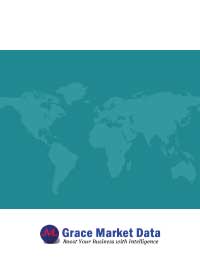Asia Pacific pet insurance market will grow by 16.8% annually with a total addressable market cap of $18.82 billion over 2021-2030 driven by the growth in pet ownership, rising in companion animal population, increasing disposable income, and an increase in the awareness related to pet insurance.
Highlighted with 40 tables and 46 figures, this 103-page report “Asia Pacific Pet Insurance Market 2020-2030 by Insurance Type (Accident & Illness, Accident Only), Policy Type (Lifetime, Non-Lifetime), Animal Type (Dogs, Cats, Other Animals), Provider (Private, Public), Distribution Channel, and Country: Trend Forecast and Growth Opportunity” is based on a comprehensive research of the entire Asia Pacific pet insurance market and all its sub-segments through extensively detailed classifications. Profound analysis and assessment are generated from premium primary and secondary information sources with inputs derived from industry professionals across the value chain. The report is based on studies on 2017-2019 and provides estimate and forecast from 2020 till 2030 with 2019 as the base year (Year 2020 is not appropriate for research base due to the outbreak of COVID-19).
In-depth qualitative analyses include identification and investigation of the following aspects:
- Market Structure
- Growth Drivers
- Restraints and Challenges
- Emerging Product Trends & Market Opportunities
- Porter’s Fiver Forces
The trend and outlook of Asia Pacific market is forecast in optimistic, balanced, and conservative view by taking into account of COVID-19. The balanced (most likely) projection is used to quantify Asia Pacific pet insurance market in every aspect of the classification from perspectives of Insurance Type, Policy Type, Animal Type, Provider, Distribution Channel, and Country.
Based on Insurance Type, the Asia Pacific market is segmented into the following sub-markets with annual revenue ($ mn) for 2019-2030 included in each primary section.
- Accident & Illness
o Dogs
o Cats
o Other Pets
- Accident Only
o Dogs
o Cats
o Other Pets
Based on Policy Type, the Asia Pacific market is segmented into the following sub-markets with annual revenue ($ mn) for 2019-2030 included in each primary section.
- Lifetime Coverage
- Non-Lifetime Coverage
Based on Animal Type, the Asia Pacific market is segmented into the following sub-markets with annual revenue ($ mn) for 2019-2030 included in each primary section.
- Dogs
o Accident & Illness
o Accident Only
- Cats
o Accident & Illness
o Accident Only
- Other Animals
o Accident & Illness
o Accident Only
Based on Provider, the Asia Pacific market is segmented into the following sub-markets with annual revenue ($ mn) for 2019-2030 included in each primary section.
- Private Insurance Providers
- Public Insurance Providers
Based on Distribution Channel, the Asia Pacific market is segmented into the following sub-markets with annual revenue ($ mn) for 2019-2030 included in each primary section.
- Insurance Agency
- Bancassurance
- Brokers
- Direct Sales
Geographically, the following national/local markets are fully investigated:
- Japan
- China
- South Korea
- Australia
- India
- Rest of APAC (further segmented into Malaysia, Singapore, Indonesia, Thailand, New Zealand, Vietnam, Taiwan, and Philippines)
For each key country, detailed analysis and data for annual revenue ($ mn) are available for 2019-2030. The breakdown of key national markets by Insurance Type, Animal Type, and Distribution Channel over the forecast years are also included.
The report also covers current competitive scenario and the predicted trend; and profiles key vendors including market leaders and important emerging players.
Key Players (this may not be a complete list and extra companies can be added upon request):
Agria
Anicom Holding
ASPCA
Bow Wow Meow
Embrace Pet Insurance Agency, LLC
Healthy Paws Pet Insurance
Ipet Insurance
More Than
Nationwide Mutual Insurance Company
Petfirst Healthcare LLC
Petplan Limited
Petsecure Pet Health Insurance
Trupanion
(Please note: The report will be updated before delivery so that the latest historical year is the base year and the forecast covers at least 5 years over the base year.)



